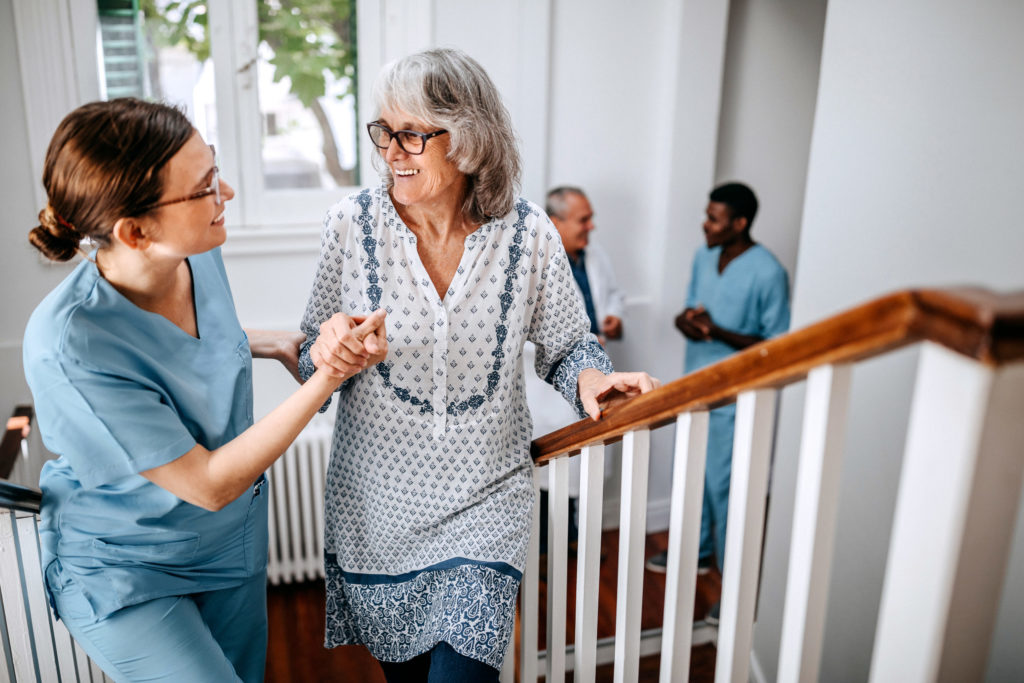“Common but not inevitable” is how one health provider describes arthritis, a medical condition that causes connective tissue to swell or become tender, and can cause varying degrees of pain depending on the person and the severity. In people with arthritis, it can often be seen in the hands, hips, or knees, and can affect mobility and even quality of life.
Who gets arthritis? According to the U.S. Centers for the Disease Control and Prevention, as many as 1 in 4 Americans have been diagnosed with some form of it, which roughly works out to more than 20 million Americans.
The numbers are interesting – just about everyone can potentially have it, but the odds of being diagnosed with it increase the older you get.
There are rare cases of childhood arthritis but among adults ages 18-44, about 7.1 percent have been diagnosed with it. Among ages 45-64, about 30 percent have been diagnosed with it. For those 65 to 75, the number goes up to 50.4 percent. For those ages 75 or older, it increases to 70-90 percent.
It’s considered the leading cause of disability in those age 65 or older, and is also the second most common diagnosis for this age group, after chronic heart disease.
There are about eight common forms of arthritis, but the most common is osteoarthritis, which causes cartilage covering the ends of bones to break down. This causes pain and inflammation when the joint is moved, and can lead to further injuries, and different amounts of sensation, from general discomfort to strong pain and burning to a feeling of grinding between the bones.
The second most-common is rheumatoid arthritis, which causes the body’s immune system to attack joint cartilage. This can eventually cause damage to the joints, further causing pain and deterioration over time.
Like certain autoimmune disorders, this one may come and go, or get more intensive for different reasons, including weather. (Colder days or drastic changes in temperature at the changing of seasons can trigger outbreaks.)
Although the odds of being diagnosed with arthritis do increase with age, medical professionals are clear that it shouldn’t necessarily be thought of as a senior-only condition.
Reducing the risk
If you have been diagnosed with arthritis or want to reduce the risk of it there are some methods to try.
This starts by learning about it, including risk factors. Some things you may not be able to do anything about, such as genetics. Have other people in your family been diagnosed with arthritis? Have you had past joint injuries or autoimmune disorders that may make your body more susceptible?
Gender also can play a role – men might be more likely to develop gout while women are more likely to have rheumatoid arthritis.
Other risk factors might be easier to focus on and cut down on the possibility of contracting arthritis or reducing symptoms if you’ve already been diagnosed.
Some of these are basic, such as stopping smoking, reducing or eliminating alcohol, and eating better. These lifestyle improvements can have all sorts of benefits. Losing weight can have dramatic results, since this can mean less weight and less pressure on already-inflamed joints and improved mobility.
More exercise seems to be a common suggestion for dealing with arthritis or other medical conditions.
The common recommendation is at least 150 minutes of moderate activity a week, 20-25 minutes a day, at least five days a week. This can be anything that gets the heart rate up, even a period of sustained walking.
Low-impact programs that lightly move the affected joints also have some value since they can help rebuild some damaged tissue.
Physical therapy can help as well, since these trained professionals will be able to come up with various exercises and activities to improve flexibility, reduce pain, and improve abilities to get around and manage life.
Definitely discuss with a health care provider, who may be able to advise on exercises or other activities that can have benefits vs. causing additional pain or inflammation. For instance, someone with severe knee or hip pain may have difficulties going on long walks, even if it has benefits.
Instead, there might be less painful options such as hydrotherapy, or even a community pool that offers areas for people to walk or swim for therapeutic purposes. There may be organized exercises classes or even opportunities to move at one’s own pace.
For some people dealing with arthritis, there may be some pharmaceutical solutions that may help. It may be as simple as the occasional aspirin or anti-inflammatory over-the-counter option when the pain or inflammation gets too intense.
Some prescription medications may have side effects or may not work as well on certain people or types of arthritis, but they may be worth some research to learn more.
As the CDC suggests, sometimes learning to live with arthritis goes a long way. You don’t have to be happy that you have the condition, but are aware of it and are actively taking steps to manage your care. This means you put a greater focus on factors like diet and weather. It means learning about different treatment methods or medications under development or different medication/therapy trials.
This approach can help you feel more adjusted and that there are some items under your control.
Learn more
If you’re interested in learning more, World Arthritis Day takes place in October each year. It’s an opportunity to become aware of different resources, current research, and other ways to get help.

